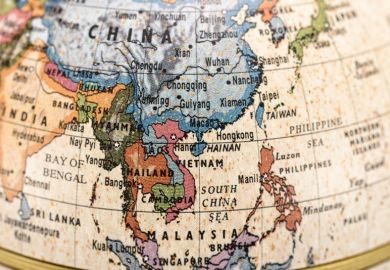There are “early signs” that China’s efforts to expand ties with countries along the “New Silk Road” could be influencing research collaboration in parts of eastern and central Europe, research has found.
However, it could be several years before a clear pattern emerges about the impact of China’s research influence on the region, according to a data analysis in a book on China’s higher education links with Europe.
The analysis, by researchers at the Centre for Science and Technology Studies at Leiden University in the Netherlands, examined data on research collaboration between China and European nations between 2010 and 2018.
In particular, the study – published in China and Europe on the New Silk Road: Connecting universities across Eurasia – analysed collaborations involving the “17+1” countries in central and eastern Europe where the Chinese government has specifically focused on boosting relations.
The data suggest that those 17+1 countries with the least-developed relationship with China had seen large rates of growth over the past decade in co-authorship of papers. On average, the annual growth in collaborations with China among these six nations was almost 30 per cent, much higher than the 18 per cent seen in other European countries with a similar volume of research cooperation with China.
However, the analysis notes that bilateral research with China formed a very small percentage of research collaborations in such eastern European nations, meaning that more information was needed to identify clear evidence that New Silk Road policies were having an effect.
Meanwhile, the researchers, Robert Tijssen, chair of science and innovation studies at Leiden, and senior researcher Jos Winnink, also found indications that collaboration with China was growing in specific fields in different countries, in both eastern and western Europe.
For instance, Latvia’s collaborations were focused on physical and materials science, while Belgium recorded growth in links on earth and energy science, and Spain notched up noticeable rises in co-authorships in agriculture and food science.
Despite these patterns, the researchers caution that it may still be too early to discern if China’s push on links with Europe was having a “widespread, systematic impact on the shape and size of European research cooperation with China”.
Elsewhere in the book, which is the culmination of a major two-year international project coordinated by Utrecht University, there is a chapter focused on the challenges faced by the European Union in its higher education relations with China.
Marijk van der Wende, the professor of higher education at Utrecht who has been leading the overall project, writes that the EU’s ability to deal effectively with China may depend greatly on its own “cohesion, and its ability to act in unity”.
Asked if China’s creation of bilateral links with some EU countries in the east could be a hindrance to this unity, Professor van der Wende told Times Higher Education that there were signs that the European Commission was now taking a more strategic approach to China in areas where it had powers, such as trade and research.
But, she said, sections of the book “make clear that the challenges and opportunities that China represent for the EU actually urge it to get its act together” on how to approach its links in research and higher education.
Register to continue
Why register?
- Registration is free and only takes a moment
- Once registered, you can read 3 articles a month
- Sign up for our newsletter
Subscribe
Or subscribe for unlimited access to:
- Unlimited access to news, views, insights & reviews
- Digital editions
- Digital access to THE’s university and college rankings analysis
Already registered or a current subscriber?








